We have ranked the top 10 rotations and the the top 10 bullpens, and now it's time for Part 3 of our series ranking team units: the top 10 infields -- for overall play, not just defense or offense -- based on the input from MLB evaluators.
1. Chicago Cubs
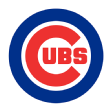 Cubs first baseman Anthony Rizzo finished 10th in National League MVP voting in 2014 and fourth last year. Third baseman Kris Bryant was the NL Rookie of the Year, after reaching base 230 times in his first 151 big league games. Addison Russell and the Cubs thrived after he took over at shortstop and established a more consistent defensive presence at the most important infield position.
Cubs first baseman Anthony Rizzo finished 10th in National League MVP voting in 2014 and fourth last year. Third baseman Kris Bryant was the NL Rookie of the Year, after reaching base 230 times in his first 151 big league games. Addison Russell and the Cubs thrived after he took over at shortstop and established a more consistent defensive presence at the most important infield position.
And during the winter the Cubs added the cherry on top of what appears to be the best and most well-rounded infield in the majors, signing Ben Zobrist to play second base. His defensive metrics dipped last season, but keep in mind that he had midseason knee surgery, and Zobrist continues to be a very strong offensive player among middle infielders; he had a .359 on-base percentage and .809 OPS. He also has proved adept against lefties -- he hit .329 against them in '15 -- which could be a skill more valued in the Cubs lineup as opposing managers attack Kyle Schwarber and Rizzo with lefties.
Here's another thing about this group: The players are all similar in personality and professionalism, and even if they weren't the best group of infielders -- which they are -- they would have a great experience playing together.
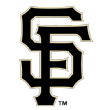 Here we have just an all-around good, solid group that must have been attractive to free-agent pitchers Jeff Samardzija and Johnny Cueto (along with the millions the Giants will pay them). Brandon Crawford won a Gold Glove for his shortstop play last season and compiled a career-high 58 extra-base hits. Third baseman Matt Duffy finished second in the NL Rookie of the Year voting after batting .295 and faring very well in some defensive metrics at his position; he finished behind only Adrian Beltre, Nolan Arenado and Manny Machado in defensive runs saved. Second baseman Joe Panik made the All-Star team after his strong first half last season, though he was taken down by back problems in the second half.
Here we have just an all-around good, solid group that must have been attractive to free-agent pitchers Jeff Samardzija and Johnny Cueto (along with the millions the Giants will pay them). Brandon Crawford won a Gold Glove for his shortstop play last season and compiled a career-high 58 extra-base hits. Third baseman Matt Duffy finished second in the NL Rookie of the Year voting after batting .295 and faring very well in some defensive metrics at his position; he finished behind only Adrian Beltre, Nolan Arenado and Manny Machado in defensive runs saved. Second baseman Joe Panik made the All-Star team after his strong first half last season, though he was taken down by back problems in the second half.
Brandon Belt will again share time at first base with Buster Posey, who is expected to catch something in the range of 100 games. Belt had 56 extra-base hits in 137 games, but the next step in his development will be gaining more consistency; last season he tended to waffle between being scorching hot, including a May in which he had a 1.075 OPS, and cratering, as in April and June when his OPS was less than .700.
 It's not yet clear how the Royals will handle playing time at second base, but the days of Omar Infante being an everyday guy at that spot are almost certainly over. In recent days, Kansas City GM Dayton Moore has spoken of the possibility that Christian Colon -- who will forever be remembered in K.C. thanks to his key pinch-hit in Game 5 of the World Series -- could get a lot of at-bats at second.
It's not yet clear how the Royals will handle playing time at second base, but the days of Omar Infante being an everyday guy at that spot are almost certainly over. In recent days, Kansas City GM Dayton Moore has spoken of the possibility that Christian Colon -- who will forever be remembered in K.C. thanks to his key pinch-hit in Game 5 of the World Series -- could get a lot of at-bats at second.
At the other infield spots, the Royals are rock-solid now that third baseman Mike Moustakas has developed the habit of hitting the ball to all fields and first baseman Eric Hosmer has become one of the pre-eminent players at his position, and Alcides Escobar's unconventional approach at the plate complements his defense. This is a group of players that has played in the World Series in back-to-back seasons, and the confidence of Moustakas and Escobar, particularly, seems to have grown significantly.
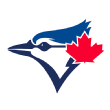 The upcoming campaign could be the first full season that Josh Donaldson and Troy Tulowitzki play together on the left side of the Jays' infield, with enormous potential for damage. Ryan Goins was an important player for the Jays after establishing himself at second base; he had a .361 on-base percentage after the All-Star break and is a good defender.
The upcoming campaign could be the first full season that Josh Donaldson and Troy Tulowitzki play together on the left side of the Jays' infield, with enormous potential for damage. Ryan Goins was an important player for the Jays after establishing himself at second base; he had a .361 on-base percentage after the All-Star break and is a good defender.
Chris Colabello and Justin Smoak could again share time at first base, though Colabello might have wedged himself into more playing time by hitting .321 last season, with a .367 on-base percentage. Toronto's first basemen combined for 110 RBIs last season, third most in the majors.
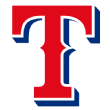 Second baseman Rougned Odor started so badly last season that he was sent to the minors, but after he was recalled, Odor -- who turns just 22 in a few weeks -- hit .292 with 18 doubles, 8 triples and 15 homers in 91 games. Odor looks as if he could be a high-impact offensive player (although he did not rate well in defensive metrics in 2015), working in an infield that also includes first baseman Mitch Moreland, future Hall of Famer Adrian Beltre and veteran shortstop Elvis Andrus.
Second baseman Rougned Odor started so badly last season that he was sent to the minors, but after he was recalled, Odor -- who turns just 22 in a few weeks -- hit .292 with 18 doubles, 8 triples and 15 homers in 91 games. Odor looks as if he could be a high-impact offensive player (although he did not rate well in defensive metrics in 2015), working in an infield that also includes first baseman Mitch Moreland, future Hall of Famer Adrian Beltre and veteran shortstop Elvis Andrus.
Andrus will be a player worth watching this season because of his postseason meltdown and because he seemed to reverse his steady decline in the second half of last season. With others in the organization pushing and encouraging him, as Evan Grant has written about, Andrus improved his OPS from .624 in the first half to .718 after the All-Star break. He is 27 years old and is owed $103 million over the next seven seasons.
Beltre needs 233 more hits to reach 3,000 in his career and 33 more RBIs to reach 1,500 -- and nobody has more fun playing, it seems, than Beltre and Andrus.
Talks of a contract extension for Beltre have begun, by the way.
 It's impossible to know exactly how Cards manager Mike Matheny will dole out playing time among his infielders -- who will play first base; how often Jedd Gyorko will play second; will the Cardinals start to be more selective about how often the 33-year-old Jhonny Peralta is in the lineup at shortstop? But Matheny should have a nice range of choices, with second baseman Kolten Wong developing and with some platoon choices at first in Matt Adams, Brandon Moss and Stephen Piscotty.
It's impossible to know exactly how Cards manager Mike Matheny will dole out playing time among his infielders -- who will play first base; how often Jedd Gyorko will play second; will the Cardinals start to be more selective about how often the 33-year-old Jhonny Peralta is in the lineup at shortstop? But Matheny should have a nice range of choices, with second baseman Kolten Wong developing and with some platoon choices at first in Matt Adams, Brandon Moss and Stephen Piscotty.
Third baseman Matt Carpenter continues to evolve as a hitter, probably to a place where no one thought he could go. Last year Carpenter had 75 extra-base hits and a .501 slugging percentage. Among third basemen who qualified for the batting title, Carpenter ranked fifth in slugging percentage.
 The Astros appear to be set for years to come in the middle of the infield, with 21-year-old Carlos Correa at shortstop and 25-year-old Jose Altuve at second base; some executives think it won't be long before Correa is regarded as among the best players in baseball.
The Astros appear to be set for years to come in the middle of the infield, with 21-year-old Carlos Correa at shortstop and 25-year-old Jose Altuve at second base; some executives think it won't be long before Correa is regarded as among the best players in baseball.
Sometime in the near future -- perhaps in 2016 -- Alex Bregman, the second overall pick in the 2015 draft, could man third base for the Astros. He reached high Class A ball last year and presumably will start this season in Double-A.
If the Astros move Bregman from shortstop, it won't be during spring training, Evan Drellich writes.
For now Luis Valbuena is penciled in at third base for Houston after bashing 25 homers (albeit with a .224 average) in 2015, and the Astros will pick a first baseman from a group that includes Valbuena, Jon Singleton and Marwin Gonzalez -- though the assumption of some evaluators is that Houston will be open to upgrades at first during the 2016 season.
 The addition of Adam Lind to at least be part of a platoon at first base could greatly help the Mariners' production at the position; last season, Seattle first basemen had a collective .702 OPS, which ranked 29th in the majors. Robinson Cano played through injury last season and still hit .287 with 56 extra-base hits, and Kyle Seager is among the best third basemen in baseball.
The addition of Adam Lind to at least be part of a platoon at first base could greatly help the Mariners' production at the position; last season, Seattle first basemen had a collective .702 OPS, which ranked 29th in the majors. Robinson Cano played through injury last season and still hit .287 with 56 extra-base hits, and Kyle Seager is among the best third basemen in baseball.
Ketel Marte's shortstop play in August and September last season represented an upgrade for a team that had tried Brad Miller, Chris Taylor and Nick Franklin there.
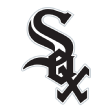 The White Sox will go into the 2016 season with some questions at shortstop and second base, but they have big-time power at the corners with Jose Abreu at first base and the newly acquired Todd Frazier at third base.
The White Sox will go into the 2016 season with some questions at shortstop and second base, but they have big-time power at the corners with Jose Abreu at first base and the newly acquired Todd Frazier at third base.
10. New York Yankees
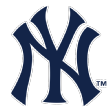 Didi Gregorius was terrible at the outset of last season but got better and better as he settled in at shortstop. From May 29 on, he played exceptional defense and batted .285. Mark Teixeira surprised everybody with his power before he got hurt; he'll open the year as the Yankees' first baseman in 2016, but New York already has a good safety net in place in Greg Bird, who had 11 homers in 178 plate appearances last season.
Didi Gregorius was terrible at the outset of last season but got better and better as he settled in at shortstop. From May 29 on, he played exceptional defense and batted .285. Mark Teixeira surprised everybody with his power before he got hurt; he'll open the year as the Yankees' first baseman in 2016, but New York already has a good safety net in place in Greg Bird, who had 11 homers in 178 plate appearances last season.
Starlin Castro takes over at second base, but maybe the X factor of the group is Chase Headley, who seemed to develop some throwing yips as he struggled through the first year of his four-year deal. If Headley's play stabilizes, this could be a good group.
Best of the rest: The Red Sox, who have one of the best shortstops in the game in Xander Bogaerts, as well as a player capable of great stuff in Dustin Pedroia -- when Pedroia is healthy, that is. But nobody knows how Hanley Ramirez will respond in his first year at first base or if third baseman Pablo Sandoval can bounce back. … The Dodgers, perhaps, depending on how the various pieces come together, with Corey Seager now installed as the everyday shortstop. … The Braves, who have Freddie Freeman at first, Jace Peterson and Gordon Beckham in a second-base platoon, Erick Aybar at shortstop and the 30-year-old Adonis Garcia at third. Garcia has been thriving in winter ball. … And finally, the Nationals, who will shift Anthony Rendon back to third base. The key will be first baseman Ryan Zimmerman, who has been increasingly affected by injury.

Dodgers agree to six-year deal with Cuban pitcher Sierra
In time, perhaps Yaisel Sierra will establish himself as something close to what the Dodgers envision him to be after agreeing to a deal with him for something in the range of $30 million: a very good big league pitcher. Or perhaps he'll turn out to be something closer to what other teams see in him: a fringy middle reliever.
There was utter shock in other front offices over what the Dodgers paid for Sierra, a 24-year-old right-hander who hasn't had a lot of on-field success in Cuba and has had command issues. "They are seeing something that we don't," said one NL official.
Said another: "We didn't like him and would not have given him a seven-figure bonus" -- $1 million -- "let alone the absurd contract he got."
Some other teams had similar assessments of Sierra as being a player who might merit a bid of less than $1 million.
Major league teams have bet heavily on players from Cuba in the past and struck big, and the White Sox's signing of Jose Abreu might be the best example of that: They did not agree with the industry perception that Abreu's bat speed would be a problem in MLB, bidding $68 million, and now have one of the best hitters anchoring their infield.
So maybe the Dodgers' investment in Sierra and other players from Cuba will eventually pay off -- although perhaps more than any other team, they've had their share of busts from Cuba as well. Erisbel Arruebarrena signed a $25 million deal two years ago and was suspended by the Dodgers for most of last season. Alex Guerrero got a $28 million deal with L.A. 2½ years ago, and while he had some nice moments as a pinch-hitter last season, there is a broad industry perception that he doesn't really have a position. Yasiel Puig was a star when he joined the Dodgers, and his play has steadily regressed since then amid growing concerns about his conditioning. The Dodgers spent $62 million on Hector Olivera last year before eating a lot of the money owed to him when they swapped him to Atlanta as part of a trade for Alex Wood.
Last summer the Dodgers worked out a $16 million deal with pitcher Yadier Alvarez, and in November, the Dodgers signed teenage outfielder Yusniel Diaz to a $15.5 million deal. Additionally, pitcher Pablo Fernandez got $8 million, and infielder Omar Estevez got $6 million.
The working strategy of the Dodgers seems to be to avoid the potential pitfall of massive individual contracts for older players such as Zack Greinke, for fear of squandering millions of dollars in value as the players decline; the Dodgers lost the bidding for Greinke over the difference of about $32 million in 2021, which would've been the sixth year of the right-hander's deal.
Instead, the Dodgers have focused on smaller deals for unproven players, mitigating the risk in each deal.
But lest there be any doubt: While bypassing the risk of big deals for proven players like Greinke, David Price and others, they have assumed a parallel risk by crushing the offers of other teams for unproven players like Sierra. They've spent tens of millions of dollars in a market (Cuba) that has been thinned out in terms of talent through defections and signings and hasn't consistently paid off.
If the Dodgers players from Cuba pan out, the front office will look brilliant; maybe Sierra will one day be part of a Dodgers championship parade. Maybe he'll turn into a significant bargain, as Abreu has.
If the enormous wave of Dodgers from Cuba doesn't produce, however, it's going to be a problem, a flushing of resources. They are going boldly, in their offers and their focus, where other teams are not.

Notables
• The Marlins signed left-hander Wei-Yin Chen to a back-loaded deal that guarantees him $80 million; Chen has an opt-out after the second year of the deal and could vest a player option for a sixth year depending on how many innings he throws in the fourth and fifth years of the deal.
Miami's projected rotation:
1. RHP Jose Fernandez
2. LHP Wei-Yin Chen
3. RHP Tom Koehler
4. RHP Jarred Cosart
5. LHP Adam Conley
The Marlins also signed veteran Chris Johnson (at a league-minimum salary) to share time at first base.
• The Rockies signed Gerardo Parra to a three-year, $27 million deal, which will make more sense if Colorado now moves Carlos Gonzalez and the $37 million owed to him for the next two years.
It's unlikely the Rockies will go to spring training with all of the outfielders on their roster, Patrick Saunders writes.
• Ken Davidoff wonders this: Will Yoenis Cespedes get the deal he is looking for?
• The Padres might soon pick a shortstop, Dennis Lin writes.

Moves, deals and decisions
1. The Yankees made a minor trade with the Dodgers.
2. The White Sox named an announcer to fill in for Hawk Harrelson.
3. A whole bunch of Royals players filed for arbitration.
4. The Rays made some minor league signings.
5. The Mariners traded for pitcher Joe Wieland.

NL East
• Former Nationals reliever Drew Storen says he'll miss the friendships in Washington.
• Phillies president of baseball operations Andy MacPhail thinks his team has improved.
• This Phillies rebuilding process should be quicker than it was in the past, Jim Salisbury writes.

NL Central
• The Pirates have been working to replace the folks who have left the organization for promotions elsewhere, Bill Brink writes.
• Jon Niese feels wanted with the Pirates.

NL West
• Alex Anthopoulos has moved on. He talked about his new job with the Dodgers.
• Are the Padres headed for last place?

AL East
• Red Sox catcher Christian Vazquez benefited from winter ball.
• Scott Lauber tries to predict the Red Sox's Opening Day roster.

AL Central
• The Tigers are looking at outfielders.
• In one projection system, the Indians are favorites in the AL Central.

AL West
• Pitching prospect Dillon Tate could rise fast for the Rangers this year.

Lastly
• Here's the New York Times obituary for Monte Irvin, who, as the paper notes, lost the prime of his playing career to racism. For Willie Mays, it was a very sad day.
• Cubs broadcaster Pat Hughes got an award.
• Radar guns are not good for youth sports, John Smoltz says.
And today will be better than yesterday.
